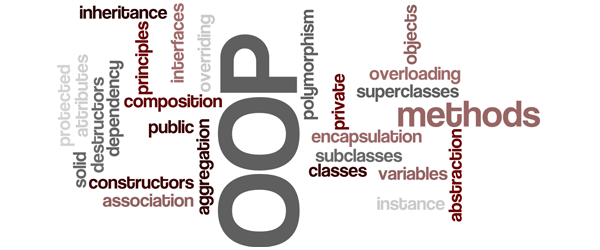An Adventure into Object Oriented Programming

Welcome to the exciting world of Object Oriented Programming (OOP)! Imagine being able to create your own virtual universe, where characters, creatures, and objects come to life. OOP is like a superpower that lets you design and build software in a structured and organized way. In this article, we’re embarking on a journey to introduce you to the enchanting concept of OOP. By the end of this adventure, you’ll have a clear understanding of the basic principles of OOP and how it can help you become a digital magician, crafting amazing software with your imagination.
What is Object Oriented Programming?
At its core, Object Oriented Programming, or OOP, is a powerful approach that enables you to create, design, and manage software by thinking about it in terms of objects. Think of these objects as characters in a story, each with their own unique qualities and abilities. Just like how characters interact and influence each other in a novel, objects in OOP interact and work together to create functional and dynamic programs.
Key Concepts of OOP
Objects: Objects are the building blocks of OOP. They represent real-world entities or abstract concepts. For example, in a game, you might have objects like “player,” “enemy,” and “treasure chest,” each with its own properties (attributes) and actions (methods).
Classes: A class is like a blueprint or template for creating objects. It defines the properties and methods that objects of that class will have. Going back to our game example, if “player” is an object, the class might define properties like “health” and methods like “move” and “attack.”
Encapsulation: Encapsulation is like a protective barrier around an object, keeping its inner workings hidden and controlled. It helps ensure that the right things happen at the right times, adding a layer of security and organization to your code.
Inheritance: Inheritance allows you to create new classes based on existing classes. It’s like passing down traits from one generation to another. This promotes code reusability and organization, allowing you to build upon existing foundations.
Polymorphism: Polymorphism lets objects take on multiple forms and behaviors. It’s like characters in a play who can play different roles. This concept adds flexibility and adaptability to your programs.
Abstraction: Abstraction helps you ignore the specifics of each car and focus on what they have in common – the essential parts that make them vehicles. This way, you can create a general blueprint for a car without getting bogged down in the details of every single type.
Benefits of Object Oriented Programming (OOP)
Structured Design: OOP provides a structured and organized way to design software. It breaks down complex problems into smaller, manageable parts (objects), making it easier to understand and tackle.
Modularity: OOP promotes modularity, which means you can work on different parts of a program independently. It’s like assembling a puzzle – you work on individual pieces, and they come together to create a complete picture.
Code Reusability: OOP allows you to create reusable pieces of code (classes) that can be used in different parts of your program. This saves time and effort, as you don’t have to write the same code over and over again.
Flexibility and Adaptability: With concepts like inheritance and polymorphism, OOP makes your software flexible and adaptable to changes. You can easily add new features or modify existing ones without starting from scratch.
Real-World Analogies
To better understand the concepts of OOP, let’s draw parallels with everyday scenarios:
Car Manufacturing: Think of a car factory. Each car model (object) shares certain features like wheels, an engine, and seats. These shared features are defined by a blueprint (class). The factory uses the blueprint to create different cars, each with its own unique color and features.
Library: Imagine a library with different types of books (objects) – novels, textbooks, and comics. Each book has distinct properties (title, author) and actions (read, borrow). The library’s catalog (class) defines how books are organized and what actions can be performed on them.
Summary
Congratulations, young adventurer! You’ve taken your first steps into the captivating world of Object-Oriented Programming. You’ve learned that OOP is like a toolbox filled with magical concepts that help you create, organize, and manage software. Objects, classes, encapsulation, inheritance, and polymorphism are your tools, each serving a unique purpose in your journey.
As you continue to explore OOP, remember that learning to code is much like learning a new language. Start with the basics, practice, and don’t be afraid to make mistakes – they’re all part of the learning process. With OOP as your guide, you’re on your way to becoming a digital architect, building magnificent worlds of software from the ground up. So, embrace the adventure, let your imagination run wild, and let the magic of Object-Oriented Programming propel you to new heights of creativity and innovation!
Read more about Fundamentals of Programming.
Suggested Reads
- Learn Binary Numbers in a simple and easy way.
- A simple and amazing Magic Trick using Binary Numbers.
- Learn Hexadecimal Numbers: The simple and easy way.
- Learn to create Flowcharts that are Easy to Understand and Follow.
- Loops in Programming: In the simplest and easy terms.
- An Adventure into Object Oriented Programming
- Encapsulation: The Heartbeat of Object Oriented Programming
- Harness The OOP's Power Of Diversity with Polymorphism
- Build powerful and meaningful relationships in OOP using Inheritance
- Abstraction - Illuminating the Nexus of Simplified and Profound Concepts
- Design Patterns for Unparalleled Excellence
- Harnessing the Essence of Classes and Objects
- Adapter Pattern
- Bridge Pattern
- Composite Pattern
- Decorator Pattern
